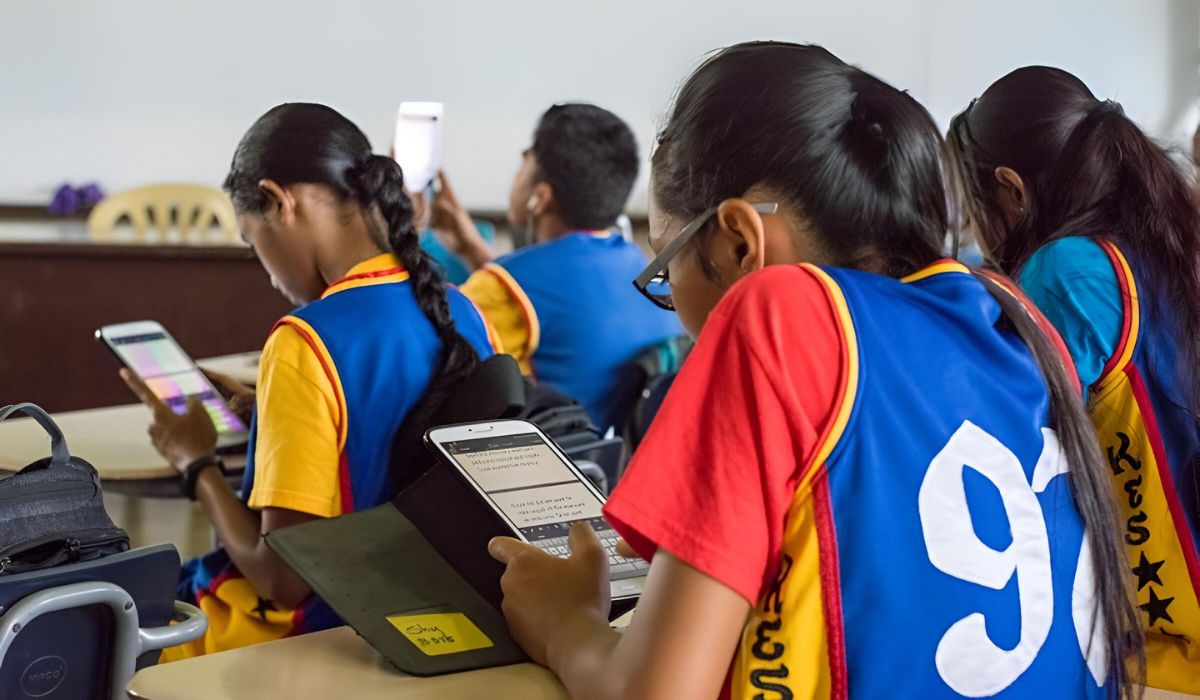Introduction
The banking concept of education is a widely debated concept in the field of pedagogy. Developed by Brazilian educator Paulo Freire in his seminal work, “Pedagogy of the Oppressed,” the banking concept challenges traditional teaching methods and offers an alternative approach to education. This concept views education as a one-sided process where teachers deposit knowledge into passive learners, who are expected to memorize and regurgitate information without critical thinking or active engagement.
Freire argues that this traditional approach to education perpetuates oppression and inequality by treating students as containers to be filled with information. According to him, this banking model reduces students to mere receptacles, devoid of creativity, curiosity, and agency. Instead of encouraging active learning, critical thinking, and personal growth, the banking concept stunts intellectual development and limits students’ ability to question and challenge social norms and power structures.
By understanding the origin and key elements of the banking concept of education, as well as its criticisms and alternatives, we can gain valuable insights into the current state of education and explore more effective methods to foster critical thinking and empower learners. In this article, we will delve into the banking concept, its origins, influential works, and the impact it has on education and society at large.
Definition of the Banking Concept of Education
The banking concept of education, as coined by Paulo Freire, is a teaching method that views students as passive receivers of knowledge, where teachers deposit information into their empty minds. In this approach, education is seen as a transfer of information from the teacher to the student, with little emphasis on critical thinking or active engagement.
According to Freire, the banking concept treats education as a transaction where teachers view students as empty vessels, waiting to be filled with predetermined information. The teacher is the sole authority in the classroom, while the students are passive recipients of knowledge, expected to memorize and reproduce the information without question.
In this model, students’ individual experiences, cultural backgrounds, and unique perspectives are ignored, as the focus is solely on the acquisition of predetermined knowledge. The banking concept assumes that the students’ role is to listen and absorb the information provided by the teacher, without any opportunity for dialogue or collaboration.
This approach to education reduces students to objects rather than subjects of their own learning. They are denied the opportunity to think critically, question the content being taught, and actively participate in shaping their own education.
The banking concept establishes a hierarchical relationship between the teacher and the students, with the former holding all the power and knowledge. The students are seen as passive receptors of information, lacking agency or the ability to actively construct their own knowledge.
Within the banking concept, students are evaluated based on their ability to reproduce information and conform to the predetermined criteria set by the teacher. This leads to a focus on rote memorization rather than meaningful understanding and application of knowledge.
Overall, the banking concept of education enforces a top-down approach to teaching and learning, disregarding the unique experiences and capabilities of students. It promotes conformity rather than critical thinking, resulting in a passive and unengaged student body.
Origin and Influential Works
The concept of the banking model of education was popularized by Brazilian educator Paulo Freire in his influential book, “Pedagogy of the Oppressed,” published in 1968. Freire’s work is deeply rooted in his own experiences and observations of the education system in Brazil.
Freire’s ideas were shaped by his interactions with adults and children living in poverty in Brazil. He noticed a stark power imbalance between those who held knowledge and those who were deprived of it. This led him to question the traditional education system and its role in perpetuating social inequality.
In “Pedagogy of the Oppressed,” Freire argues that the banking model of education is a form of oppression. He suggests that education should be a liberating force that empowers individuals to critically analyze their social conditions and become agents of change.
Freire’s work caught the attention of educators around the world and influenced numerous educational theorists and practitioners. His ideas spread beyond Brazil and gained recognition as a powerful critique of traditional education systems.
One of the notable aspects of Freire’s work is the emphasis he placed on the importance of dialogue and collaboration in education. He believed that education should be a reciprocal process where both the teacher and the learner actively engage in a mutual exchange of knowledge and ideas.
Freire’s ideas have been influential in shaping alternative educational approaches and inspiring educators to move away from the banking model of education. His work has resonated with those who believe in the empowerment of students and the promotion of critical thinking and social justice.
In addition to “Pedagogy of the Oppressed,” Freire’s other notable works include “Education for Critical Consciousness” and “Pedagogy in Process.” Through these works, Freire offers further insights into alternative educational models and the potential for education to be a transformative force in society.
Today, Freire’s ideas continue to inspire educators and educational institutions to move away from the traditional banking model of education and towards more student-centered, participatory, and empowering approaches to teaching and learning.
Key Elements of the Banking Concept
The banking concept of education is characterized by several key elements that define its structure and dynamics within the classroom. These elements form the foundation of the traditional model of education that Freire criticizes:
- Teacher-centered approach: In the banking concept, the teacher holds the position of authority and possesses the knowledge that is to be transmitted to the students. The teacher is seen as the primary source of information, while the students are treated as passive recipients.
- Depository model: The teacher deposits information into the minds of the students, who are expected to memorize and regurgitate the knowledge without critically engaging with it. The students’ role is limited to passively receiving and storing information.
- Memorization and reproduction: Evaluations in the banking concept focus on the students’ ability to memorize and reproduce the information provided by the teacher. There is little emphasis on understanding, critical thinking, or application of knowledge. Success is measured by how well students conform to the predetermined criteria set by the teacher.
- Hierarchical relationship: The banking concept establishes a hierarchical relationship between the teacher and the students. The teacher is seen as the authority figure with all the knowledge, while the students are positioned as subordinates lacking agency or the ability to contribute meaningfully to their own education.
- Passive students: In the banking concept, students are reduced to passive recipients of knowledge. They are discouraged from questioning the content being taught and their own experiences and perspectives are disregarded. Students are expected to accept and internalize the knowledge transmitted to them without critical reflection.
- Standardized curriculum: The banking concept typically follows a standardized curriculum that is set by educational institutions or authorities. It prioritizes the transmission of specific information and does not allow for flexibility or individualized learning experiences tailored to students’ needs or interests.
These elements of the banking concept contribute to the authoritarian and oppressive nature of traditional education systems. They limit students’ ability to develop critical thinking skills, engage in meaningful dialogue, and shape their own educational experiences. Critics argue that this model suppresses creativity, curiosity, and individuality, hindering students’ personal growth and development as active, critically thinking individuals in society.
Critics of the Banking Concept
The banking concept of education has faced significant criticism from educators and scholars who argue that it hinders the development of students’ critical thinking skills, creativity, and agency. Some of the key criticisms of the banking concept include:
- Passive learning: Critics argue that the banking concept promotes passive learning, where students are mere recipients of knowledge rather than active participants in their own education. This limits their ability to think critically, reflect on their experiences, and engage in meaningful dialogue.
- Devaluation of students’ voices: The banking concept tends to devalue the unique experiences, perspectives, and voices of students. It disregards the importance of student agency and fails to recognize that students often bring valuable insights and knowledge to the learning process.
- Reproduction of social inequalities: The banking concept perpetuates social inequalities by treating education as a tool to maintain the existing power structures. It focuses on transmitting predetermined knowledge, often reflecting the dominant ideologies and excluding the voices and experiences of marginalized individuals and communities.
- Lack of critical thinking: The emphasis on memorization and reproduction of information in the banking concept hinders the development of critical thinking skills in students. It discourages them from questioning the content being taught and fosters a culture of conformity rather than intellectual curiosity and independent thought.
- Dependence on authority: The banking concept reinforces the idea that knowledge is something that is solely possessed by the teacher, positioning the students as passive recipients. This dependence on authority limits students’ ability to develop their own ideas, critically evaluate information, and navigate complex social and intellectual landscapes.
- Lack of engagement and motivation: Students who experience the banking concept may become disengaged and demotivated in their learning. The lack of active involvement and meaningful experiences can lead to boredom, apathy, and a limited sense of ownership over their own education.
These criticisms have led to a reevaluation of traditional educational models, prompting educators and scholars to explore alternative approaches that foster critical thinking, student agency, and a more inclusive and equitable learning environment.
Freire’s Alternative: Problem-Posing Education
As a response to the limitations of the banking concept of education, Paulo Freire proposed an alternative pedagogical approach called problem-posing education. This educational model emphasizes dialogue, critical thinking, and active student participation.
In problem-posing education, teachers and students engage in a mutually transformative process of learning. Instead of the teacher being the sole depositor of knowledge, both the teacher and students become co-creators of knowledge through dialogue and inquiry.
Central to problem-posing education is the recognition that knowledge is not static, but rather a process of inquiry and discovery. It encourages students to critically analyze their social reality, question assumptions, and actively engage in problem-solving.
In this approach, teachers serve as facilitators and guides, creating a collaborative and democratic learning environment. Students are viewed as active participants with unique experiences and perspectives, and their voices and ideas are valued.
Problem-posing education encourages students to bring forth their own questions, critical reflections, and solutions to real-world problems. It fosters a sense of agency, empowering students to become active contributors to their own education and agents of change in society.
Through dialogue, students are encouraged to challenge existing knowledge and explore alternative perspectives. This cultivates critical thinking skills, creativity, and the ability to engage in meaningful discussions and debates.
In problem-posing education, evaluation is based on the quality of students’ critical thinking, their ability to articulate their ideas, and their engagement in collaborative problem-solving. The focus shifts from regurgitating information to deep understanding, application, and synthesis of knowledge.
This alternative model of education aims to transform both the individual and society. By encouraging critical consciousness and active participation, problem-posing education seeks to empower learners to become agents of social change, promoting justice, equality, and liberation.
While problem-posing education challenges the traditional power dynamics in the classroom, it also acknowledges the importance of ongoing reflection and self-critique. It recognizes that there are inherent challenges and complexities in implementing a truly participatory and liberatory educational approach.
Despite the practical challenges, problem-posing education continues to inspire educators worldwide to create learning environments that empower students, promote critical thinking, and foster social transformation.
Comparison between Banking and Problem-Posing Education
The comparison between the banking concept of education and problem-posing education reveals fundamental differences in their approaches to teaching and learning. Let’s examine some of the key distinctions:
- Teacher-Student Relationship: In the banking concept, the teacher holds authority and knowledge, while the students are passive recipients. In problem-posing education, the relationship is collaborative, with teachers and students engaging in dialogue and mutual learning.
- Knowledge Transmission: The banking concept focuses on knowledge transmission from teacher to student, with an emphasis on memorization and reproduction. Problem-posing education emphasizes knowledge co-creation, critical thinking, and active engagement in problem-solving.
- Role of Students: In the banking concept, students are passive and expected to conform to transmitted knowledge. In problem-posing education, students are active participants, bringing forth questions, experiences, and critical reflections.
- Evaluation: The banking concept measures students’ success based on their ability to reproduce information. Problem-posing education values critical thinking, application of knowledge, and collaborative problem-solving as the basis for evaluation.
- Engagement and Motivation: The banking concept may lead to student disengagement and apathy due to its passive nature. Problem-posing education fosters student engagement, motivation, and a sense of ownership over their own learning.
- Power Dynamics: The banking concept reinforces hierarchical power dynamics, with the teacher as authoritative and the students as subordinates. Problem-posing education challenges power imbalances and promotes shared decision-making and dialogue.
- Critical Consciousness: The banking concept discourages critical thinking and conformity, while problem-posing education fosters critical consciousness, encouraging students to question social norms, power structures, and inequalities.
Overall, the banking concept of education adopts a top-down, authoritarian approach that treats students as passive receptacles of knowledge. It limits critical thinking, creativity, and active engagement in the learning process.
In contrast, problem-posing education embraces collaboration, critical thinking, and student agency. It recognizes the importance of dialogue, the co-creation of knowledge, and the development of critical consciousness.
By understanding the differences between these educational models, educators can reflect on their teaching practices and strive to move away from the banking concept and towards a more participatory, transformative approach that empowers students and promotes meaningful learning experiences.
Impact and Application of the Banking Concept in Society
The banking concept of education has profound implications for individuals and society at large. Its impact can be seen in various areas, including social inequalities, conformity, and the perpetuation of existing power structures.
One of the significant impacts of the banking concept is the reproduction of social inequalities. By treating education as a process of depositing predetermined knowledge, the banking model neglects the diverse experiences, perspectives, and cultural backgrounds of students. This approach often reinforces existing social hierarchies and excludes marginalized individuals and communities from accessing quality education.
The banking concept also promotes conformity and a lack of critical thinking. The emphasis on memorization and reproduction of knowledge discourages students from questioning existing power structures or engaging in independent thought. This can lead to a passive citizenry, less inclined to challenge societal norms and injustices.
Moreover, the banking concept reinforces and perpetuates existing power structures. By positioning the teacher as the sole authority and source of knowledge, it entrenches a hierarchical relationship where students become passive recipients. This reifies the existing systems of domination and authority, hindering societal progress towards more equitable and democratic structures.
The application of the banking concept in society can result in a disempowered population unable to critically analyze and challenge social issues. It limits individuals’ ability to actively participate in shaping their communities, inhibiting the development of a proactive and engaged citizenry.
Furthermore, the application of the banking concept can hinder innovation and creativity. By focusing on memorization and standardization, it stifles individuality and discourages original thinking. This can have detrimental effects on society’s ability to address complex challenges and foster creativity and innovation.
It is crucial to recognize and understand the impact and application of the banking concept to create a more equitable and empowering educational system. By implementing alternative pedagogical approaches that foster critical thinking, active engagement, and inclusive practices, we can work towards transforming education and society as a whole.
Efforts to move away from the banking concept and towards more student-centered and participatory approaches have the potential to empower individuals, promote social justice, and create a more democratic and equal society.
Conclusion
The banking concept of education, as proposed by Paulo Freire, has sparked significant discussion and debate in the field of pedagogy. This traditional approach to education, characterized by knowledge transmission, passive learning, and a hierarchical teacher-student relationship, has garnered criticism for its limitations and potential to perpetuate social inequalities.
Freire’s alternative, problem-posing education, offers a transformative model that emphasizes critical thinking, dialogue, and active student participation. Problem-posing education empowers students to question, analyze, and engage in meaningful problem-solving, fostering their agency and promoting social transformation.
The comparison between the banking concept and problem-posing education reveals significant differences in their approach to teaching, learning, and the role of students. Problem-posing education challenges power dynamics, encourages critical consciousness, and fosters collaboration and student ownership of learning.
It is important to recognize the impact of the banking concept on society, including its potential to reinforce social inequalities, discourage critical thinking, and perpetuate existing power structures. By understanding this impact, educators can reflect on their practices and strive to implement more equitable and empowering educational approaches.
Efforts to move away from the banking concept and towards problem-posing education have the potential to create a more inclusive, democratic, and transformative educational system. By valuing student agency, promoting critical thinking, and embracing collaborative learning, we can empower individuals to become active participants in shaping their lives and the society they live in.
As we continue to explore and develop alternative educational models, it is imperative to recognize the significance of education in the pursuit of social justice and liberation. By fostering critical consciousness, promoting dialogue, and empowering students as active agents of change, we can move towards creating a more just, equitable, and democratic society.

























